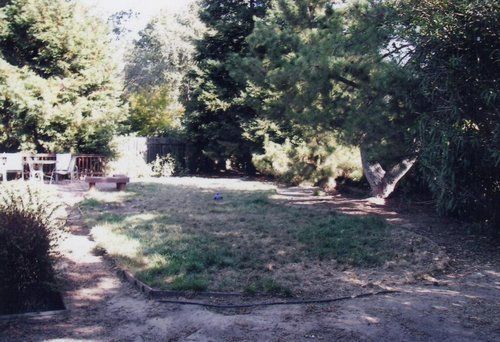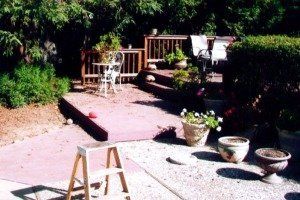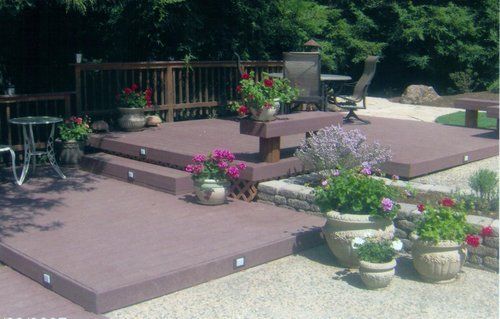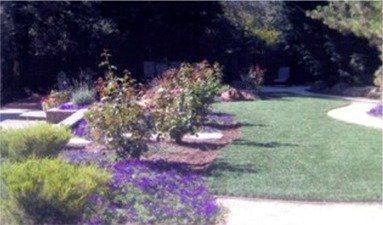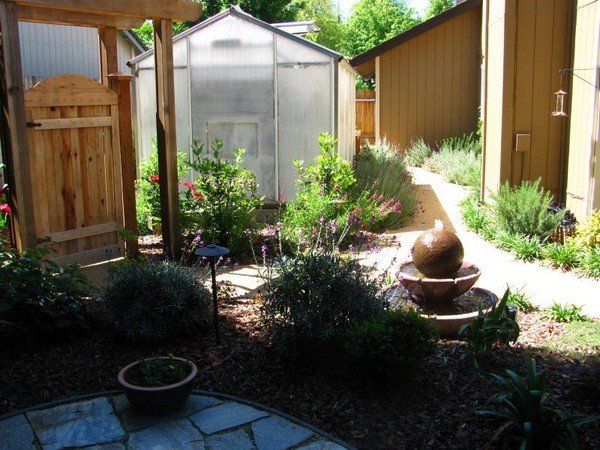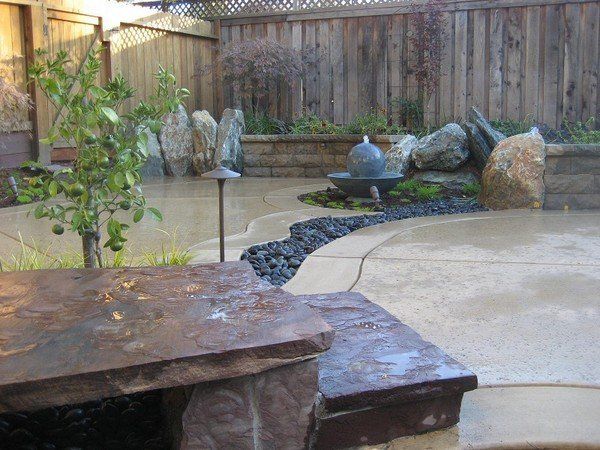Outdoor Living
Home remodeling: Reclaiming the backyard
After re-landscaping, homeowners gain a new perspective on relaxation
The Sacramento Bee, California Life, Aug. 4, 2007
Article by Kathy Maynard quoting Susan Silva New Paragraph
Q: One reason we bought our house in the 1980s was because it had a large yard with lots of grass for the kids to play on. Now that we no longer use the lawn for swing sets or playing catch, it seems like the only time we are out there is to mow the grass, weed the beds and prune the shrubs. We'd like to update our yard so we could enjoy it more. Where do we begin? -- Andrea Simmons, Carmichael
A: "Nothing feels better than at the end of a stressful workday to come home, kick off your shoes, grab your favorite cold beverage and retreat to your backyard," says Susan Silva, owner of Susan Silva Landscape Design in Orangevale. "Most of us can't pack up every weekend for Lake Tahoe, so why not create an outdoor retreat in your very own yard?"
These days, we are so inundated with TV programs, home and garden shows, and magazine articles about yard makeovers that it's easy for homeowners to feel overwhelmed. But an attractive, manageable landscape does not have to be out of your price range or too much to take care of, she says.
"A landscape designer can help you renovate your existing yard by saving your favorite parts and introducing new, contemporary ideas and solutions," Silva says.
"Why not keep those beautiful trees you have nurtured for years to maturity and incorporate them into a new design? A large redwood tree can canopy over a flagstone patio. A full-grown Japanese maple can be a focal point next to a fountain with a stone bench. The large lawn can be reduced or eliminated," she says.
It is best to start with a landscape plan designed by a professional who listens carefully to what you are trying to achieve and who also offers lots of fresh and exciting ideas, Silva says. A design can be installed in stages as your budget allows or you can choose to hire a professional to install it all at once.
Bruce and Susan Barstis of Fair Oaks had decided that it made more sense to remodel their 30-year-old home than to move long before they hired Silva to help them update the landscaping last spring.
"We love the area. We're in a court on a quarter-acre with lots of beautiful full-grown trees," says Susan Barstis. "It's a one-story and we can retire here without taking on a huge new mortgage, so we decided to make it really comfortable."
The couple already had worked on their home, remodeling the kitchen, changing the rock facade and mantle of the fireplace, upgrading windows, and replacing the vertical wood siding with stucco and rock fascia on the house exterior.
But their large yard had gotten out of hand; the overgrown shrubs were starting to die, the wood retaining wall needed replacement, and the lawn was in need of an overhaul after years of owning dogs.
One day Susan Barstis happened to meet Silva at a local dog park and after striking up a conversation, it didn't take long for Barstis to believe she may have found the ideal designer to renovate their landscape.
Silva met with Barstis and her husband, walked the yard, learned what they liked and disliked about the landscaping, and discussed how they might enjoy it more.
"We have an active dog who is an important member of the family, and we couldn't have anything that she could wreck. We also wanted it relatively low maintenance," Barstis says.
"What we appreciated most about (Silva) was how she really listened to what we wanted and didn't try to add a bunch of fancy things that she thought should be there. She came up with a design, we tweaked it a little, and after a few little changes had exactly what we were looking for."
The couple chose to keep the original concrete patios and walkways because they were in good shape, and it would have been cost prohibitive to tear out everything and start over.
Although the composite deck was nice, it felt small and secluded behind all of the overgrown shrubs. The shrubs were removed and replaced with colorful plants in containers.
Terracing the backyard by replacing the old hedge row that divided the lower and upper levels with a rose garden revealed a panoramic view of the entire yard from the deck. Low-voltage lighting was installed by the contractor, added a new dimension at night.
Silva also suggested minimizing the size of the lawn to reduce maintenance, but after much research, Bruce and Susan decided to eliminate all lawn maintenance by installing an artificial product called Tuff Grass.
"It's more decorative than anything else, but the dog runs around and lies on it and chews her bone. We recently told some friends it was artificial, and they couldn't believe it. We're really glad we did it," Barstis says.
The entrance of the home became more attractive by replacing several large bushes in the front yard with a courtyard and flagstone patio by the contractor. A Meyer lemon tree was kept for its wonderful fruit and provided some privacy for the new sitting area.
"It's just beautiful," says Barstis. "People who come over say it looks like a park. We don't use the front yard a lot, but we are out back all the time, every chance we get. We had dinner out there with company last night, and we sat there drinking coffee and reading the paper this morning.
"My husband used to come home from work and play card games on the computer to relax, but now he goes out in the yard," she says. "We often just sit and talk, which we haven't done in a long time."
